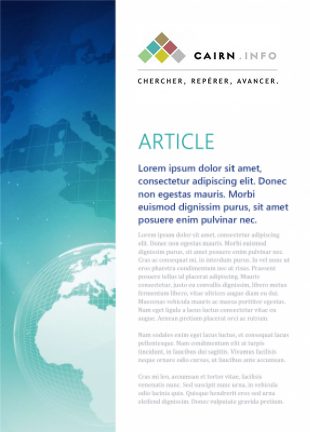Struyf, D. (2007). Médecine & Hygiène, 28(1), 71-82. doi:http://dx.doi.org/10.3917/tf.071.0071
[Religious Beliefs and Psychotherapy: From Symptom to Resources]
Résumé. Que faire des croyances religieuses en psychothérapie? La psychanalyse, les thérapies familiales et l’ethnopsychiatrie nous proposent des modèles différents pour interpréter et travailler à partir du discours religieux des patients. Mais comment le thérapeute utilise-t-il ou cache-t-il ses propres croyances en thérapie? Comment analyse-t-il les conflits et oppositions, souvent non dites, entre ses croyances personnelles, conscientes et inconscientes, et celles de la famille? Un malaise évident subsiste encore du côté des thérapeutes, que nous allons tenter de comprendre et d’analyser en proposant des pistes de travail pour le dépasser. On peut rapprocher le travail sur les croyances des modèles constructivistes en thérapie familiale: on cherche à développer du côté de la famille et du côté du thérapeute d’autres lectures, d’autres interprétations de la réalité que celles qui ont rigidifié le système. On travaille donc sur les représentations de la famille. Pour ce faire, nous devons être capables de modifier nos propres représentations et d’interroger ou au moins de repérer nos propres croyances, en particulier celles qui pourraient être source d’un conflit mythique.
[Abstract. What may help us to interpret the patient’s religious discourse and deal with it accordingly? What is the place of religious belief in psychotherapy? Psychoanalysis, family therapies, and ethnotherapy offer us various models. But how should the therapist make use of his/her own belief in therapy, if at all? How should they analyze the often unexpressed conflicts and oppositions that exist between their own conscious or unconscious beliefs and those of the patient’s family? A certain unease persists on the part of the therapist. The present article intends to understand and analyze this unease, and to suggest a few strategies that may help to solve it. The constructivist models used in family therapy may inspire us in dealing with patients’ religious beliefs: in family therapy we try to have both therapist and family develop new interpretations of reality, different from those which have made the system inflexible. The work is focused on the representations of the family. To make this possible, we should be able to modify our own representations and refer to our own beliefs, or at least locate them, especially those that could lead to a mythical conflict.]
